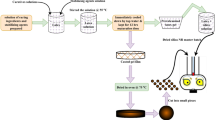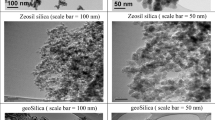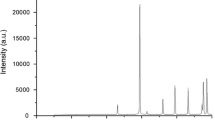Abstract
The endeavour of producing a green tyre tread compound with high silica loading is still a daunting task for all tyre industries globally. The presence of non-rubber constituents, i.e. protein and phospholipid in natural rubber (NR), disrupts the silanization reaction in the silica-filled NR composite. To get rid of that vital issue, an optimized quantity bio-based sugar alcohol “sorbitol” was introduced at the early stage of mixing as a blocking agent, for improving the silica dispersion and producing a green and sustainable tyre tread compound. A significant improvement in technical key properties like tensile strength, reinforcement index, ARI (abrasion resistance index) (~ 9%), HBU (heat build-up) (5 to 8 unit), and rolling resistance (8 to 9% reduction) was evident in sorbitol-treated NR compound, even at higher loading of silica (i.e. silica/CB: 45/5). The functional groups of NR non-rubber substance intervention interrupt the homogeneous filler dispersion, which is verified by the investigation of Payne effect and detailed morphological analysis. The constitutive modelling of the 30 phr silica-loaded sorbitol-treated and untreated NR vulcanizates was performed and fitted to find the best material model based on the correlation factor (R2 = 0.999). Subsequently, by using Ogden material model constants (N = 4) the cross-link density of all the samples was calculated and compared with their trend of Young’s modulus. Based on the overall performances, 30 phr silica-loaded sorbitol-treated compound with 20 phr carbon black was envisaged to be the best compound for tyre tread application.* As cited in Ref [38]
Graphical Abstract













Similar content being viewed by others
Data and code availability
Available on special request.
References
Bokobza L (2004) The reinforcement of elastomeric networks by fillers. Macromol Mater Eng. https://doi.org/10.1002/mame.200400034
Rattanasom N, Saowapark T, Deeprasertkul C (2007) Reinforcement of natural rubber with silica/carbon black hybrid filler. Polym Test 26:369–377. https://doi.org/10.1016/J.POLYMERTESTING.2006.12.003
Hassan HH, Ateia E, Darwish NA et al (2012) Effect of filler concentration on the physico-mechanical properties of super abrasion furnace black and silica loaded styrene butadiene rubber. Mater Des. https://doi.org/10.1016/j.matdes.2011.05.005
Noriman NZ, Ismail H (2012) Properties of styrene butadiene rubber (SBR)/recycled acrylonitrile butadiene rubber (NBRr) blends: The effects of carbon black/silica (CB/Sil) hybrid filler and silane coupling agent, Si69. J Appl Polym Sci 124:19–27. https://doi.org/10.1002/app.34961
ten Brinke JW, Debnath SC, Reuvekamp LAEM, Noordermeer JWM (2003) Mechanistic aspects of the role of coupling agents in silica-rubber composites. Compos Sci Technol 63:1165–1174. https://doi.org/10.1016/S0266-3538(03)00077-0
Murakami K, Ilo S, Ikeda Y et al (2003) Effect of silane-coupling agent on natural rubber filled with silica generated in situ. J Mater Sci. https://doi.org/10.1023/A:1022908211748
Luginsland HD, Niedermeien W (2003) New reinforcing materials for rising tire performance demands. Rubber World 228:34–45
Kaewsakul W, Sahakaro K, Dierkes WK, Noordermeer JWM (2013) Optimization of rubber formulation for silica-reinforced natural rubber compounds. Rubber Chem Technol 86:313–329. https://doi.org/10.5254/rct.13.87970
Khanra S, Kumar A, Ghorai SK et al (2020) Influence of partial substitution of carbon black with silica on mechanical, thermal, and aging properties of super specialty elastomer based composites. Polym Compos 41:4379–4396. https://doi.org/10.1002/PC.25720
Rodgers B, Waddell W (2005) The science of rubber compounding. Science and technology of rubber. Wiley, Hoboken
Goswami M, Sharma S, Ghosh MM et al (2022) Finite element method based damage model to characterize effect of geometric configuration on fracture properties of elastomeric composites. Mech Adv Mater Struct. https://doi.org/10.1080/15376494.2022.2051102
Ganguly D, Bera A, Hore R et al (2022) Coining the attributes of nano to micro dual hybrid silica-ceramic waste filler based green HNBR composites for triple percolation: Mechanical properties, thermal, and electrical conductivity. Chem Eng J Adv 11:100338. https://doi.org/10.1016/j.ceja.2022.100338
Khanra S, Ganguly D, Ghorai SK et al (2020) The synergistic effect of fluorosilicone and silica towards the compatibilization of silicone rubber and fluoroelastomer based high performance blend. J Polym Res 27:1–17. https://doi.org/10.1007/S10965-020-02062-Z/FIGURES/15
Sattayanurak S, Noordermeer JWM, Sahakaro K et al (2019) Silica-reinforced natural rubber: synergistic effects by addition of small amounts of secondary fillers to silica-reinforced natural rubber tire tread compounds. Adv Mater Sci Eng 2019:1–8. https://doi.org/10.1155/2019/5891051
Wang MJ (1999) The role of filler networking in dynamic properties of filled rubber. Rubber Chem Technol. https://doi.org/10.5254/1.3538812
Mihara S, Datta RN, Noordermeer JWM (2011) Flocculation in silica reinforced rubber compounds. Rubber Chem Technol 82:524–540. https://doi.org/10.5254/1.3548262
Dierkes WK, Noordermeer JWM (2004) Improving silica processing. Rubber World 229:8
Kaewsakul W, Sahakaro K, Dierkes WK, Noordermeer JWM (2015) Mechanistic aspects of silane coupling agents with different functionalities on reinforcement of silica-filled natural rubber compounds. Polym Eng Sci. https://doi.org/10.1002/pen
Goerl U, Hunsche A (1997) Investigations into the silica/silane reaction system. Rubber Chem Technol 70:608–623. https://doi.org/10.5254/1.3538447
Kaewsakul W, Sahakaro K (2012) Optimization of mixing conditions for silica-reinforced natural rubber tire tread compounds. Rubber Chem Technol 85:277–294. https://doi.org/10.5254/rct.12.88935
Ganguly D, Khanra S, Goswami D et al (2020) Controlling the mechanoadaptive properties of hydrogenated nitrile rubber by the incorporation of cementious based industrial waste for downhole application. Polym Compos 41:4397–4410. https://doi.org/10.1002/PC.25721
Choi S, Nah C, Jo B (2003) Properties of natural rubber composites reinforced with silica or carbon black. Influ Cure Accel Content Filler Dispers 1389:1382–1389. https://doi.org/10.1002/pi.1232
Liengprayoon S, Dubreucq E, Sriroth K et al (2007) Lipid composition of Hevea brasiliensis latex and dry rubber: characterization and relation with some physical properties. CRRI, India
Kawahara S, Kakubo T, Sakdapipanich JT et al (2000) Characterization of fatty acids linked to natural rubber—role of linked fatty acids on crystallization of the rubber. Polymer (Guildf) 41:7483–7488. https://doi.org/10.1016/S0032-3861(00)00098-7
Nun-anan P, Wisunthorn S, Pichaiyut S et al (2020) Influence of nonrubber components on properties of unvulcanized natural rubber. Polym Adv Technol 31:44–59. https://doi.org/10.1002/PAT.4746
Kawahara S, Chaikumpollert O, Akabori K, Yamamoto Y (2011) Morphology and properties of natural rubber with nanomatrix of non-rubber components. Polym Adv Technol 22:2665–2667. https://doi.org/10.1002/PAT.1803
Zhou Y, Kosugi K, Yamamoto Y, Kawahara S (2017) Effect of non-rubber components on the mechanical properties of natural rubber. Polym Adv Technol 28:159–165. https://doi.org/10.1002/PAT.3870
Sarkawi SS, Dierkes WK, Noordermeer JWM (2013) The influence of non-rubber constituents on performance of silica reinforced natural rubber compounds. Eur Polym J 49:3199–3209. https://doi.org/10.1016/J.EURPOLYMJ.2013.06.022
Nimpaiboon A, Sriring M, Kumarn S, Sakdapipanich J (2020) Reducing and stabilizing the viscosity of natural rubber by using sugars. Interference Maillard React Between Protein Sugar. https://doi.org/10.1002/app.49389
Lang F (2013) Cell volume control. Seldin Geibisch’s Kidney 1:121–141. https://doi.org/10.1016/B978-0-12-381462-3.00005-7
Bera A, Ganguly D, Ghorai SK et al (2022) Treatment of natural rubber with bio-based components: a green endeavor to diminish the silica agglomeration for tyre tread application. Chem Eng J Adv. https://doi.org/10.1016/J.CEJA.2022.100349
Sattayanurak S, Sahakaro K, Kaewsakul W et al (2020) Synergistic effect by high specific surface area carbon black as secondary filler in silica reinforced natural rubber tire tread compounds. Polym Test 81:106173. https://doi.org/10.1016/J.POLYMERTESTING.2019.106173
Prasertsri S, Rattanasom N (2011) Mechanical and damping properties of silica/natural rubber composites prepared from latex system. Polym Test 30:515–526. https://doi.org/10.1016/j.polymertesting.2011.04.001
Choi SS (2002) Improvement of properties of silica-filled natural rubber compounds using polychloroprene. J Appl Polym Sci 83:2609–2616. https://doi.org/10.1002/APP.10201
Rattanasom N, Prasertsri S, Ruangritnumchai T (2009) Comparison of the mechanical properties at similar hardness level of natural rubber filled with various reinforcing-fillers. Polym Test 28:8–12. https://doi.org/10.1016/j.polymertesting.2008.08.004
Prasertsri S, Rattanasom N (2012) Fumed and precipitated silica reinforced natural rubber composites prepared from latex system: Mechanical and dynamic properties. Polym Test 31:593–605. https://doi.org/10.1016/J.POLYMERTESTING.2012.03.003
Diez J, Bellas R, Ramírez C, Rodríguez A (2010) Effect of organoclay reinforcement on the curing characteristics and technological properties of SBR sulphur vulcanizates. J Appl Polym Sci 118:566–573. https://doi.org/10.1002/APP.32431
Ogbebor OJ, Farid AS, Okwu UN (2004) Properties of silica/clay filled heavy-duty truck tire thread formulation. J Appl Polym Sci 94:1024–1028. https://doi.org/10.1002/APP.20921
Diani J, Fayolle B, Gilormini P (2009) A review on the mullins effect. Eur Polym J 45:601–612. https://doi.org/10.1016/J.EURPOLYMJ.2008.11.017
Houwink R (1956) Slipping of molecules during the deformation of reinforced rubber. Rubber Chem Technol 29:888–893. https://doi.org/10.5254/1.3542602
Mullins L (1948) Effect of stretching on the properties of rubber. Rubber Chem Technol 21:281–300. https://doi.org/10.5254/1.3546914
Kraus G, Childers CW, Rollmann KW (1966) Stress softening in carbon black-reinforced vulcanizates. Strain rate and temperature effects. J Appl Polym Sci 10:229–244. https://doi.org/10.1002/APP.1966.070100205
Hamed GR, Hatfield S (1989) On the role of bound rubber in carbon-black reinforcement. Rubber Chem Technol 62:143–156. https://doi.org/10.5254/1.3536231
Fu W, Wang L, Huang J et al (2019) Mechanical properties and mullins effect in natural rubber reinforced by grafted carbon black. Adv Polym Technol. https://doi.org/10.1155/2019/4523696
Goswami M, Ghosh MM, Dalmiya MS et al (2020) A finite element method based comparative fracture assessment of carbon black and silica filled elastomers: reinforcing efficacy of carbonaceous fillers in flexible composites. Polym Test 91:106856. https://doi.org/10.1016/J.POLYMERTESTING.2020.106856
Goswami M, Mandloi BS, Kumar A et al (2020) Optimization of graphene in carbon black-filled nitrile butadiene rubber: constitutive modeling and verification using finite element analysis. Polym Compos 41:1853–1866. https://doi.org/10.1002/PC.25503
Goswami M, Ghorai SK, Sharma S et al (2021) Nonlinear fracture assessment and nanomechanical deformation of elastomeric composites: development of finite element model and experimental validation. Polym Compos 42:3572–3592. https://doi.org/10.1002/pc.26080
Acknowledgements
The authors would like to acknowledge the Indian Institute of Technology Kharagpur and Apollo Tyres Pvt. Ltd, Chennai, for their financial support and all kinds of facilities. The authors are also thankful to the Central Research Facility of IIT Kharagpur for carrying out the different characterization of the samples. The author also likes to thank Mr. Rajesh De, Junior Technician/Junior Laboratory Assistant, Rubber Technology Centre, IIT Kharagpur.
Funding
The authors acknowledge the Ministry of Education, India, Indian Institute of Technology Kharagpur, India, and Apollo Tyres Ltd. Chennai, India (Grant Number: IIT/SRIC/RT/TRF/2018–19/288), for funding and financial support during the course of this work.
Author information
Authors and Affiliations
Contributions
Abhijit Bera was involved in conceptualization, writing the original draft, and writing—reviewing and editing; Mohit Goswami and Debabrata Ganguly were responsible for writing—reviewing and editing, and methodology; Jyoti Prakash Rath, S. Ramakrishnan, and Job Kuriakose contributed to project administration; S. K. P. Amarnath took part in writing—reviewing and editing; and Santanu Chattopadhyay participated in supervision.
Corresponding author
Ethics declarations
Conflict of interest
The authors declare that there are no conflicts of interest to declare.
Additional information
Handling Editor: Chris Cornelius.
Publisher's Note
Springer Nature remains neutral with regard to jurisdictional claims in published maps and institutional affiliations.
Supplementary Information
Below is the link to the electronic supplementary material.
Rights and permissions
Springer Nature or its licensor (e.g. a society or other partner) holds exclusive rights to this article under a publishing agreement with the author(s) or other rightsholder(s); author self-archiving of the accepted manuscript version of this article is solely governed by the terms of such publishing agreement and applicable law.
About this article
Cite this article
Bera, A., Goswami, M., Ganguly, D. et al. The variation of structure and property of sorbitol-treated NR vulcanizates with increasing the silica loading. J Mater Sci 58, 996–1011 (2023). https://doi.org/10.1007/s10853-022-08092-w
Received:
Accepted:
Published:
Issue Date:
DOI: https://doi.org/10.1007/s10853-022-08092-w




